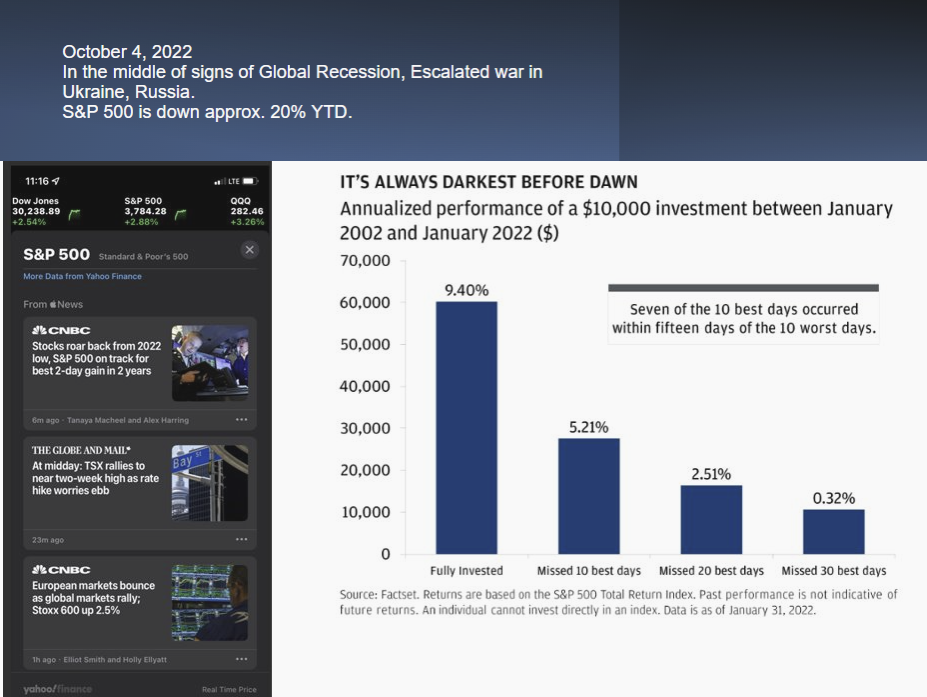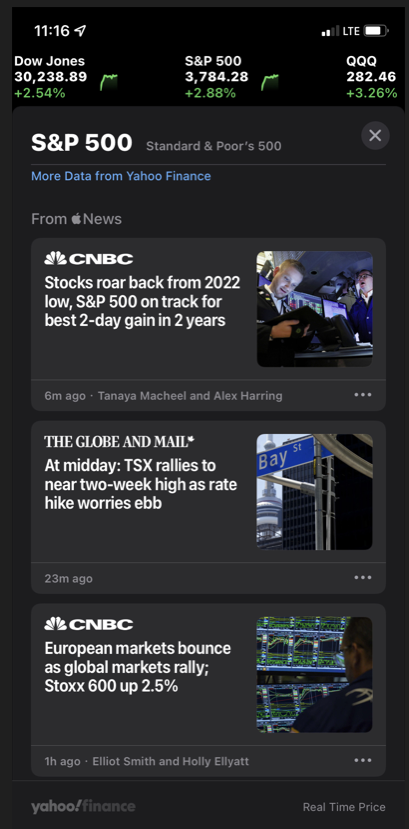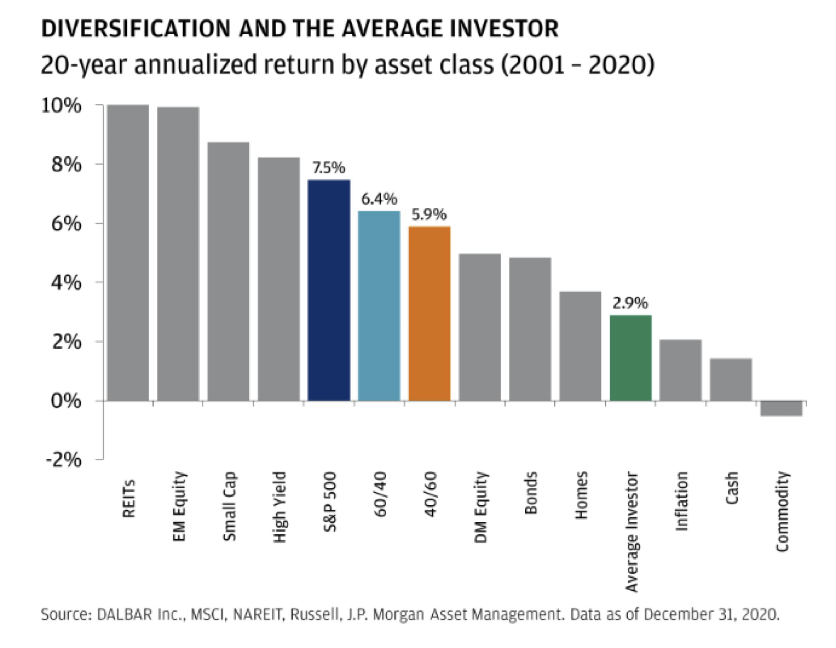


This chart shows the annualized performance of a $10,000 investment made between January 2002 and January 2022. A fully invested investment returned 9.4% or $60,253. When the investor missed the 10 best days, the return is 5.21% or $27,604. When the investor missed the 20 best days, the return is 2.51% or $16,414. Finally, when the investor missed the 30 best days, the return is 0.32% or $10,651. An added fact is that seven of the 10 best days occurred within 15 days of the 10 worst days.
Topics we have been writing about, helping our clients with...
Meat of the Mission:
1. Why is the Fed raising rates such that we could go into a recession?
a. Why is inflation so dangerous?
b. What role does psychology play in our economy, inflation, etc.?
i. 1970, 1980’s...
c. Why would we keep investing if we knew we were headed for a recession?
i. Official dates of the Great Recession: December 2007 – June 2009
1. S&P 500 Market returns
a. January 1 – December 2009 – 26.5%
b. 2010 – S&P 500....about 15%
2. What is Deep Risk versus Shallow Risk? We are afraid of the wrong things.
Book by ...Deep Risk: How History Informs Portfolio Design (Investing for Adults)
a. William Bernstein - William J. Bernstein is an American financial theorist and neurologist.
i. The Four Pillars of Investing
ii. If You Can
iii. Deep Risk
b. Deep Risk:
i. Deep Risk are inflation, deflation, confiscation, and devastation... “any useful discussion of portfolio design of necessity incorporates their probabilities, consequences, and costs of mitigation.”
1. For example, investment discipline, taxes, inflation, disability, death, spending, income...
c. Shallow Risk:
i. “The Biggest Lie” Leading Edge video, news media. CNBC. Short-term market performance.
1. You will experience shallow risk every few years...
2. This down market does not help but it is factored in. It’s part of investment, a cost, not a risk. Something to be planned for...
a. Ongoing, below average returns would be a big concern. In other words, what did you plan for? What are your market expectations?
b. For example, March 2020 – down 30%-ish. 35% from the high in February.
3. Do not allow shallow risk to become deep risk... Investor discipline
This chart shows the 20-year annualized return by asset class (2001–2020). REITs returned 10%. EM equity returned 9.9%. Small cap returned 8.7%. High yield returned 8.2%. The S&P 500 returned 7.5%. A 60/40 portfolio returned 6.4%. A 40/60 portfolio returned 5.9%. DM equity returned 5%. Bonds returned 4.8%. Homes returned 3.7%. The average investor returned 2.9%. Inflation ran at 2.1%. Cash returned 1.4%. Finally, commodities returned -0.5%.
